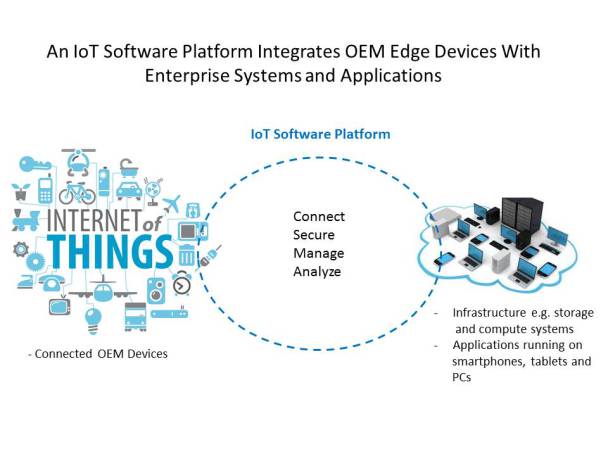
Embedded Software Solutions For Internet of Things (IoT) Device Development
Industry reports promise major benefits to OEMs that add IoT capabilities into their end-products and who adopt data-driven business practices:
- Improve operational efficiency & reduce operational costs
- reduce device servicing costs by optimizing device performance through sensor monitoring of critical components (battery, motors etc)
- use of predictive maintenance services to reduce device downtime & outages
- device operational data can be used to make “real-time” decisions
- demand forecasting and service request prediction
- Generate new revenue sources through new service offerings,
- Build better products through long-term direct measurement and analysis of product operations and customers use,
- Improve user experience: the most responsive brand, improve CSAT and build customer loyalty
- Improve agility: immediate insights from new software features deployed with customers.
This is achieved through collection of device data from sensors embedded in the OEM device itself or in the environment in which the device operates or both. At regular intervals sensor data is communicated to an aggregator or into the cloud using any number of communicationn networks such as ethernet, WiFi, Bluetooth, Zigbee, 6LoPAN, cellular etc and a number of open network protocols such as MQTT, CoAP or proprietary. This data communication can happen using a heartbeat as short as a millisecond or as long as hours. The data can be stored in the cloud (or in edge aggregators) and enterprise applications can be built to display, report on and perform simple or deep analytics which yield the BI required by the OEM's business.
If you are looking to add IoT capability to your existing products or you're developing new products with IoT capability and you're looking for a customized IoT solution, RTSS can help.
Role of the IoT Software Platform
At a conceptual level, the basic function of an IoT platform is to connect deployed OEM devices (Things) to enterprise storage, computing and applications, typically in the cloud but possibly at the edge to reduce storage costs and provide real-time analysis. The primary functions of the IoT platform provide services to connect, secure, manage and analyze deployed OEM devices and provide a vehicle for applications development.
Looks simple but, in practice, selecting an IoT platform, initiating an IoT project, deploying & running IoT products is highly complex involving many moving parts. IoT projects involve:
- Operational technolgies or OT (the edge devices and aggregators an OEM ships to its customers),
- traditional Information technologies or IT like databases, cloud servers & storage,
- Communications technolgies for edge device connections and cloud connection,
- Security technologies to provide end-to-end device & data security,
- Application technologies such as data visualization/reporting/analytics that yield BI value.
IoT Platform Components
IoT Edge Device Development and Runtime Platforms
IoT Edge Device Security Software
IoT Device Aggregation At The Edge
Having an aggregator at the customer premises gives you the ability to centrally manage your IoT products for that site and also have local device-to-device communication and co-ordination. Real-time decisions can be made about what data is passed into cloud storage for deep analytics to reduce data traffuc flow and cloud storage costs. Real-time analytics can also be provided in the aggregator to provide real-time decision making and improved responses to incidents.
The aggregator is optional, however: another supported architecture is where you have a single device at the customer premises and in this configuration the cloud drivers, which normaly reside inside the aggregator box.

